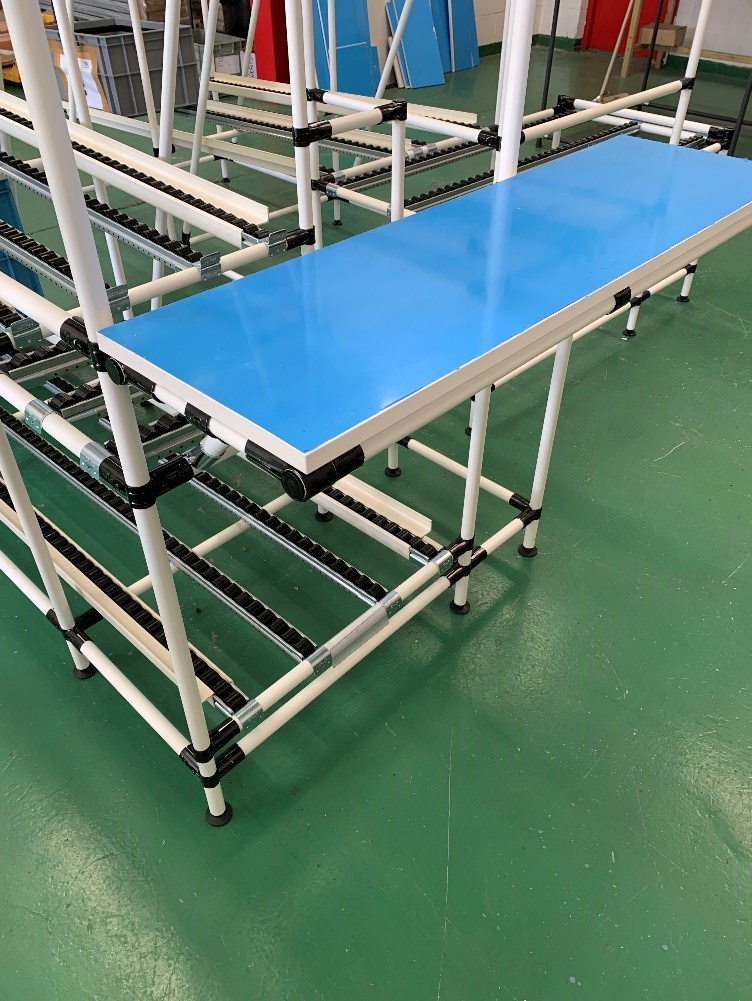BG Log UK is a specialist in supporting Lean Manufacturing projects, with a particular specialism in the organisational aspects of factories.
Managing the logistics processes taking place within a company is very complex. BG Log UK was formed in 2020 to provide a credible and cost-effective option for Automotive, Aerospace and Warehouse Fulfilment businesses who required a reliable supplier to provide a sustainable product in a timely manner.
Supply chain management requires a clear vision to take into account several intertwined factors. With a highly experienced team in terms of Lean Management and CI implementation techniques, and the capability to work hand in hand with a customer’s Lean engineers and facilitators, BG Log says it can design a solution and build it in the UK, using a robust 28mm range of steel materials that provides structural support and satisfies QHSE (quality, health, safety, environmental) requirements.
BG Log says its concept is based on the design, implementation and construction of complete and fully operational solutions. It selects and provides the best materials for a project, and offers all the advice needed to best produce the solution, as well as constant support with a keen focus on safety.
Its BG SMARTUBE product range includes:
Dunnage racks: created to form bespoke transport solutions for multiple parts that can be easily transported to the point of use or between stations. The bag creates a protective environment for the part and can also be lined with micro fibre material to stop damage and retain the quality finish of the surface. Access can be gained from either side or closed off. Compartments can be numbered for ease of identification.
Gravity Feed conveyors: these work by creating an incline within the flow racks to prompt movement of carriages or parts within the rack. Gravity feeds the part from A to B using rollers or surfaces created to suit the individual requirement. The Operator can feed each part and leave to run to point of use and also have return lanes to form a closed loop for production.
Flow racks: these assist the cell to move products from point A to B by using feed lanes and take off lanes for each operator. The rack helps reduce or remove the several of the wastes in terms of transport and over/under production by creating Kanban positions. Kanban solutions help the Lean transformation of the production line by using a pull system and therefore flow racks are built to host only the right number of parts required for the process. Flow racks can be mobile or static and can be designed to the exacting and unique needs of each customer.
Workstations and trolleys: can be tailored according to the need by adding multiple accessories such shadow boards, drawers, screen arms and tooling rails. BG Log can provide a wide range of surfaces according to either budget or specific needs such as ESD or duty rubberised work tops. Stations can be mobile or static.
5S Solutions: Sort, Straighten, Shine, Standardize, Sustain. BG Log’s systems help promote 5S in terms of shadow boards, cleaning stations and trolleys and information cubes to help report KPIs and SQCDP metrics. It provides screen printed boards with your company branding and design projects tailored specifically for your facility.
Customised Projects: BG Log has undertaken several special projects that it says have been extremely well received, and says it is willing to discuss customer requirements and provide advice and expertise in best practice.







